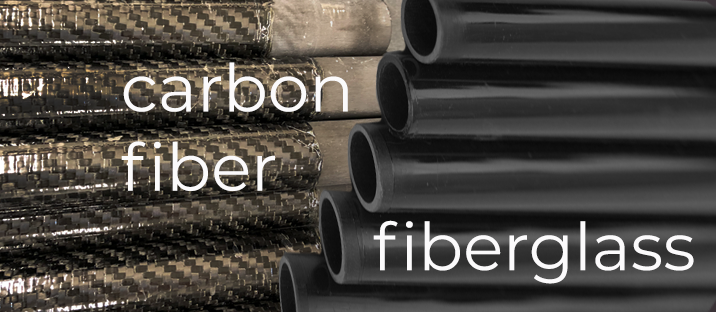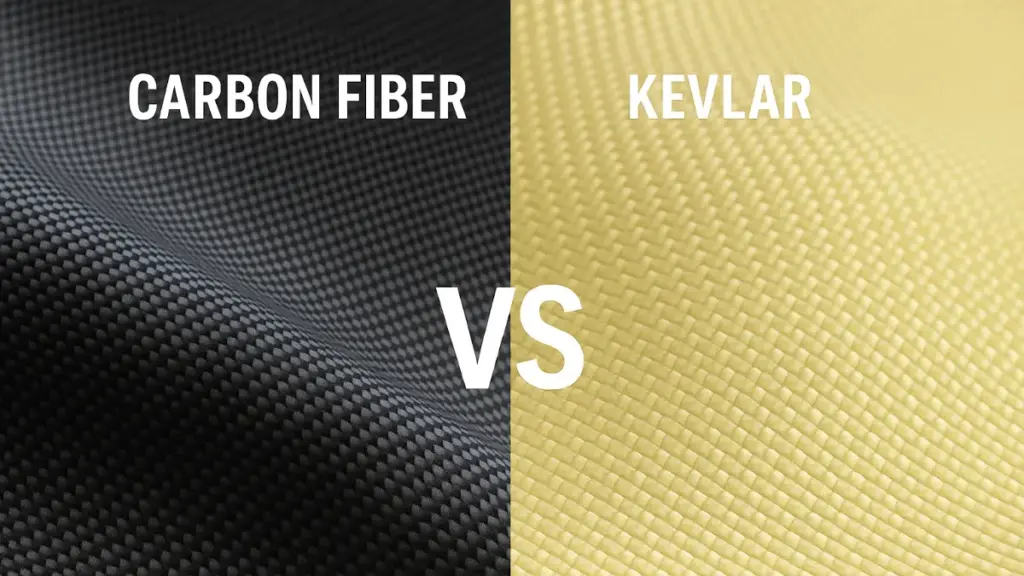
As the automotive industry increasingly adopts advanced materials like carbon fiber and fiberglass, many customers face challenges when choosing the right option for their car parts. At Shasha Carbon Fiber, a leading manufacturer in the field, we often see customers torn between these two materials. So, what’s the difference between carbon fiber and fiberglass?
Simply put, carbon fiber is stronger, lighter, and more rigid than fiberglass, but it comes at a higher cost. Fiberglass, on the other hand, is more flexible, cost-effective, and still offers a high strength-to-weight ratio, making it ideal for applications where budget constraints are a factor.
This article will deeply discuss carbon fiber and fiber glass, and then compare their difference in the strength, elasticity, weight, heat resistance, chemical resistance, and cost. By the end, you’ll have a clearer understanding of which material is best suited for your needs, whether you’re in the automotive, aerospace, or manufacturing industry.
Carbon Fiber vs. Fiberglass: Key Differences
| Property | कार्बन फाइबर | फाइबरग्लास |
|---|---|---|
| ताकत | Carbon fiber is stronger than fiberglass, offering a tensile strength that’s more than 20% higher. | Fiberglass is strong, but not as strong as carbon fiber. It is more flexible. |
| लोच | Less flexible and more rigid, with a higher tensile modulus (4 times that of fiberglass). | More flexible and can withstand greater strain without breaking. |
| वज़न | Lighter than fiberglass, typically about 15% less in weight. | Heavier than carbon fiber, but still much lighter than metals like steel. |
| गर्मी प्रतिरोध | Excellent heat resistance with low thermal expansion, maintaining stability even in extreme temperatures. | Less heat resistant; may expand or contract with temperature changes, but certain types can withstand up to 7200°C. |
| रासायनिक प्रतिरोध | Very resistant to corrosion, acids, and abrasions. | Also highly resistant to chemicals, but not as strong as carbon fiber in terms of mechanical properties. |
| लागत | More expensive to produce due to the complex manufacturing process. | More affordable, with lower production costs and easier mass production. |
कार्बन फाइबर क्या है?

ऑटो शो या कार रेस देखते समय दर्शक अक्सर सुनते हैं कार्बन फाइबर कार पार्ट्स, कार्बन फाइबर कार बाहरी, या कार्बन फाइबर कार इंटीरियर” introduced by the host. Carbon fiber is a composite material that is widely used in automotive manufacturing. As production technology becomes more advanced, more manufacturers begin to provide carbon fiber car parts such as rear view mirror cases, interior door panels, door handles, shift bars, racing seats, air kits, etc.
Carbon fiber is made through the carbonization and graphitization of organic fibers, resulting in a filamentous material with a diameter of 5-10 microns and a carbon content exceeding 90%. It is classified into small bundles (less than 24K fibers) and large bundles (more than 24K fibers). A 1K bundle contains 1,000 individual fibers.
Pros of Carbon Fiber
- Strength-to-Weight Ratio: Carbon fiber is incredibly strong and lightweight, making it ideal for high-performance applications, especially in the automotive and aerospace industries.
- सहनशीलता: It offers excellent resistance to corrosion, wear, and high temperatures, ensuring longevity and reliability in demanding environments.
- Rigidity: Carbon fiber is stiffer than fiberglass, which makes it suitable for applications where structural integrity is crucial, such as car parts and sports equipment.
- Aesthetic Appeal: The distinct woven pattern of carbon fiber is highly valued in both functional and decorative applications, such as automotive interiors and exteriors.
Cons of Carbon Fiber
- High Cost: The complex and time-consuming manufacturing process makes carbon fiber significantly more expensive than materials like fiberglass or aluminum.
- Brittleness: Carbon fiber is more brittle than fiberglass and can crack or break under excessive impact or stress, limiting its use in flexible applications.
- Manufacturing Complexity: The production of carbon fiber requires specialized equipment and technology, making it challenging to mass-produce and increasing manufacturing time.
Shasha Carbon Fiber is a leading manufacturer in the automotive aftermarket, committed to providing high-quality carbon fiber products. With cutting-edge technology and expert design, Shasha ensures a seamless, one-stop shopping experience for its partners and customers.
फाइबर ग्लास क्या है?

Fiber glass, also called glass fiber, is a kind of inorganic non-metallic material with excellent properties, widely used as industrial material these days. The art of spinning glass yarns to make fabrics is very old, dating back to 1713.
FFiber glass is made from extremely fine fibers of glass. The base ingredients of glass fibers are forms of silica, mainly sand, limestone, stone ash and borax. To make glass fibers, the glass is heated until it is molten and then forced through ultra-fine pores, resulting in a very thin glass filament. Monofilaments range in diameter from a few microns to more than twenty microns, equivalent to 1/20-1/5 of a human hair.
Glass fiber products are categorized into four major groups: chopped strands, direct draw rovings, assembled rovings, and mat products.
Pros of Fiberglass
- Cost-Effective: Fiberglass is much cheaper to produce compared to carbon fiber, making it a cost-effective option for many applications.
- Lightweight: Like carbon fiber, fiberglass is lightweight and has favorable strength-to-weight properties, making it ideal for use in various industries, including automotive and construction.
- सहनशीलता: Fiberglass is highly durable, offering good resistance to corrosion, chemicals, and abrasion, making it suitable for long-lasting use in harsh environments.
- Flexibility: Unlike carbon fiber, fiberglass is less brittle and can withstand more strain without breaking, making it ideal for applications where flexibility is needed.
Cons of Fiberglass
- Less Strength: Fiberglass is not as strong or stiff as carbon fiber, which limits its use in high-performance applications requiring maximum strength and rigidity.
- Lower Rigidity: Fiberglass is less rigid than carbon fiber, meaning it may not provide the same structural integrity in certain applications.
- Bulkier: While lightweight, fiberglass is still bulkier compared to carbon fiber, which can be a disadvantage in applications where space or weight is a critical factor.
Differences Between Carbon Fiber vs. Fiberglass

स्रोत: गुडविंड्स
Carbon fiber is often confused with fiber glass. Even though there are similarities in manufacturing and some crossover in end products like furniture and automobile moldings, they are different.
फाइबर ग्लास बनाम कार्बन फाइबर, कुल मिलाकर कौन बेहतर है? इस प्रश्न का सटीक उत्तर देना काफी कठिन है क्योंकि यह अनुप्रयोगों और गुणों पर निर्भर करता है। कुछ क्षेत्रों में, उदाहरण के लिए, एयरोस्पेस निर्माण में, कार्बन फाइबर, फाइबर ग्लास से बेहतर होता है। हालाँकि, इन्सुलेशन के मामले में, फाइबर ग्लास आदर्श विकल्प है।
ताकत
Carbon fiber is renowned for its exceptional strength, which is largely due to its fibrous structure and high tensile strength. It is more than 20% stronger than fiberglass and has a strength-to-weight ratio that is roughly twice as high. Carbon fiber is strong because its fibers are tightly bonded, providing a high level of structural integrity without adding excess weight.
On the other hand, fiberglass is still much stronger than steel, but its strength is more evenly distributed, making it less rigid than carbon fiber. It is less brittle and offers more flexibility, but this trade-off means fiberglass is less suitable for applications where rigidity and strength are critical.
लोच
Carbon fiber is much less flexible than fiberglass, with a tensile modulus four times higher. This means carbon fiber is much stiffer and more rigid. In contrast, fiberglass is more elastic, capable of bending and absorbing more strain without breaking, making it more flexible overall.
वज़न
Carbon fiber is typically about 15% lighter than fiberglass. This weight difference gives carbon fiber an advantage in applications where minimizing weight is important.
While both materials are lighter than metals like steel and aluminum, fiberglass still offers a favorable weight-to-strength ratio but is relatively heavier compared to carbon fiber.
गर्मी प्रतिरोध
Carbon fiber has a low coefficient of thermal expansion and high dimensional stability, meaning it maintains its mechanical properties in extreme temperatures. Its negative coefficient of thermal expansion is offset by the positive coefficient of its matrix, resulting in a near-neutral overall thermal expansion. This gives carbon fiber better stability in both extreme heat and cold.
In contrast, fiberglass expands with heat and contracts with cold, making it less stable in fluctuating temperatures. However, some specialized fiberglass types can withstand heat up to 7200°C.
रासायनिक प्रतिरोध
Both carbon fiber and fiberglass offer excellent resistance to harmful chemicals, corrosion, acids, and abrasion. However, carbon fiber generally performs better in extreme environments, as it is more resistant to a wider range of chemicals. While fiberglass also provides strong chemical resistance, it may not be as effective in certain highly corrosive conditions.
लागत
Fiberglass is generally more cost-effective than carbon fiber due to its simpler manufacturing process and the availability of raw materials. Therefore, fiber glass is used in a wider range of applications than carbon fiber.
It is not easy for carbon fiber to realize mass production. It’s more of an intensive and time-consuming process to manufacture carbon fiber than fiber glass. The manufacturing process of carbon fiber should be more organized and involved, and there are fewer established producers of carbon fiber.
Common Applications of Carbon Fiber and Fiberglass

Carbon Fiber Applications
Carbon fiber has high electrical conductivity (volumetric impedance) as well as excellent EMI shielding properties. Due to these features, CFRP (carbon fiber reinforced plastics) are applied into the field of EMI shielding. CFRP is superior to steel or glass fiber reinforced plastics (GFRP) in terms of specific tensile strength and specific elastic modulus (specific stiffness).
In addition, carbon fiber composites are extensively used in the automotive and aerospace industries, as well as in sports equipment and other high-performance applications where light weight and strength are crucial. The material’s versatility has led to its adoption in a wide range of products, from fishing rods and bicycle frames to high-end autom
Carbon fiber has a strength index, which is graded according to tensile strength. Common types of carbon fiber are T300, T400, T700, T800, T1000. Products of T300 are mainly for ordinary civil use, and products of T800 and above are mainly used in the military space field. The carbon fiber market is expected to reach a value of more than $8.9 billion by 2031. The number is indicative of the wide use and popularity of carbon fibers.
Fiberglass Applications
Fiber glass is usually used as reinforcement materials, electrical insulation materials and thermal insulation materials when manufacturing composite materials. Once the glass fibers are woven together, different resins can be added to increase the strength of the product, which allows it to be molded into a variety of shapes.
Various manufacturers produce different types of glass fibers for different end uses. Common items made from fiberglass include home furnishings fabrics, apparels and garments, tires, sports equipment, car exterior parts. Since fiber glass is lightweight and durable, it is an ideal material for more elaborate applications, such as circuit boards.
निष्कर्ष
To sum up, both carbon fiber and fiber glass have advantages and disadvantages in different aspects. Each type of fibers varies in its properties such as strength, elasticity, weight, heat resistance, chemical resistance, and cost so different materials can be interchanged in certain aspects of industry depending on the circumstances.
Consumers have to take the properties of steel into their consideration when purchasing. There are many factors to consider when choosing carbon fiber and fiber glass. Sometimes consumers also need to take the manufacturer and supplier into account.
FAQS
How heavy is carbon fiber?
Carbon fiber typically weighs around 1.6–2.0 grams per cubic centimeter (g/cm³). It is 15-20% lighter than fiberglass, making it an ideal choice for high-strength, lightweight applications.
Is carbon fiber expensive?
Yes, carbon fiber is typically much more expensive than fiberglass, with prices ranging from $10 to $20 per pound, depending on the grade. Its high cost is due to the complex manufacturing process, though its superior strength and light weight often justify the expense in specialized applications.
Which is better, carbon fiber or glass fiber?
It depends on the application. Carbon fiber is stronger, lighter, and more rigid, making it ideal for high-performance uses, while fiberglass is more affordable and flexible, suitable for cost-effective projects.







